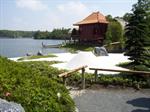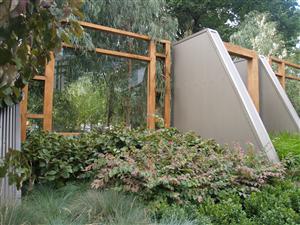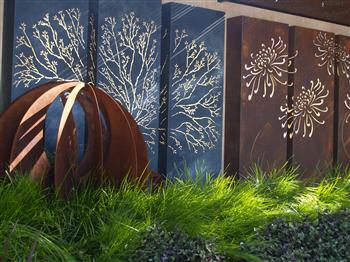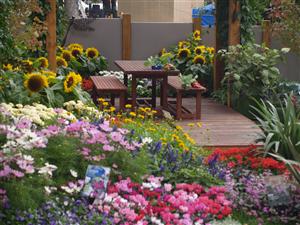Ideas for a Landscaping Style?
TIPS for Choosing the Style of Garden Design
 In the past, many tropical gardens have reflected the influence of a colonial heritage. New concepts and styles have developed in recent decades to produce a great diversity of options.
In the past, many tropical gardens have reflected the influence of a colonial heritage. New concepts and styles have developed in recent decades to produce a great diversity of options.
The design of a tropical garden can reflect any combination of influences. The most important thing is that the design is carefully thought out and the implications of design decisions are carefully considered before being implemented. In other words; be sure that you understand what the final results of what you do might be.
A theme running throughout the garden helps to create atmosphere and cohesion, giving the "feel" that you desire. The desired use of the garden will also affect what type of garden should be used. For instance, a formal garden may not be suitable for someone who needs lots of space for children's play and pets. Some types of gardens to consider include:
 FORMAL
FORMAL
Formal gardens are orderly, often with symmetry in their design and a highly manicured appearance. The pathways and garden beds are frequently arranged on either side of a central pathway in regular shapes. Each side of the path is a mirror image of the other side. Formality in a garden is not a black and white thing though. There are an unlimited range of compromises between the very formal and totally informal garden.
INFORMAL
Informal gardens are not symmetrical, they can be more natural in appearance and an untidy appearance often does not look out of order. They tend to be lower in maintenance than other types of gardens, however, informal should not mean "no care".
NATURAL
This sort of garden attempts to "recreate" nature. It is a very informal style of garden. It is not necessary to try and create a garden reminiscent of natural vegetation in your area, although you may wish to do that if you wish (e.g. a bush garden consisting of local plants). You might, for example, create a garden that mirrors a scene from a rainforest, in an area that might previously been woodland. You might incorporate rocks and fallen logs in your garden to give a more natural appearance. Plants might be left to grow, die, self seed, etc, relatively untouched by you.
RESORT
This usually involves the heavy use of palms, ferns and colourful flowers and coloured foliage. The resort garden has a true tropical feel to it. It can be high or low maintenance depending on the attention paid to soil type, the plants used and watering requirements.
COLONIAL
This is a traditional style, which may use wide paths (frequently gravel), large verandahs attached to houses, large expanses of lawn, large trees for shade, and intricate ornamentation (eg. lacework on the verandah, decorative fountains, picket fencing or gates, etc. This can be well suited for a person looking to enhance the property value of an older traditional home.
PERMACULTURE
This style of garden involves using the space for self-sufficiency, with concentration on productive land use rather than aesthetics. Even more than this, permaculture aims to develop a landscape that will be self sustaining and productive for generations.
A permaculture garden can be as small as a balcony or many hectares in size. It may look like an untended jungle, but if designed properly, it will not be over run by weeds, and it will maintain a diverse variety of crop plants, even if neglected.
 BALCONY
BALCONY
Using pot plants and furnishings to create a garden atmosphere in a restricted space.
HERB GARDENS
Herb gardens can be large or small, involving one corner of your garden or the whole garden. Some people grow a herb garden in containers, and when they move house, they take it with them. A small area of culinary herbs close to the back door is often appropriate, because it is easy to get herbs from when cooking in the kitchen.
Some people devote a large section of their garden to herbs, creating a network of paths between garden beds filled with an endless array of different types of herb plants. Formal herb gardens can look spectacular, but more often than not, people choose to grow their herbs in an informal setting.
ROSE GARDENS
Whole gardens can be devoted to roses, sometimes with a low hedge (eg. Buxus sempervirens or Lonicera nitida) bordering the bed. Alternatively, roses may be planted with other shrubs in a garden bed, or as a feature attraction within another style of garden. Roses tend to look their best when arranged in a formal pattern, but with a little creativity, they can blend into most situations.
COTTAGE GARDENS
While cottage gardens are typically thought of as being more suited to cooler areas, many traditional "cottage garden" plants are grown successfully in tropical and subtropical areas, and many plants that derive naturally from these areas can quite successfully be incorporated into a cottage garden theme.
Additionally many warm climate plants can be used to imitate the structure and appearance of a cottage garden.
The bones of a cottage garden are it's paths. The way you arrange the paths will have a great impact on what you do with everything else. Always remember that a path should lead somewhere. It may provide access from the front door to the garage, or perhaps from a patio area to a lawn on the far side of the cottage garden. Paths can also lead to garden features; perhaps to a seat, a sundial or a gazebo. The best cottage gardens usually have wide garden beds, so avoid putting paths so close together that the beds between them become very narrow (keep beds 2 metres or more wide if possible). Once you have determined the positioning of paths, consider locating special features (eg. a gazebo, sundial, statue or weeping rose) at critical points such as the end of a long path or the junction of two crossing paths. This then creates a focal point to attract your attention as you look down the length of a path.

COLOUR THEMES
Colour is a major factor in any garden. Whether you acknowledge it or not, colour has a psychological effect on us all. Certain colours are known to relax us while others stimulate. You can use this characteristic to give your garden life, vitality and action, or calmness, serenity and contemplation. In warm districts, mass plantings of flowers in the blue, green and white colour range will give an effect of soothing and relaxing coolness.
Consider:
- White flowers with silver and dark green background appear cool and harmonious
- Orange, red or yellow flowers with dark green background appear warm, stimulating and tropical
- Warm colours brings the garden closer
- Cool colours makes the garden appear larger.
Browse our Courses -Study and Learn more -
click here
More from ACS
Ebook - Inspiring: covers formal, natural, eclectic, modern, oriental, Mediterranean; zoom in on stunning images and plans.
View eBook
Ebook - Shade types, creating shade, designs, shade plants, water, culture, propagation.
View eBook
Enhance your design skills and apply them to various garden styles.
View Course
Ebook - 108 stunning pages and photos: ideal for landscapers, gardeners and home gardeners interested in creating beautiful water features.
View eBook
Course - draw designs, survey sites, understand plants, soils, timbers, climate, and other landscape materials pivotal to the success of a good landscape design.
View Course